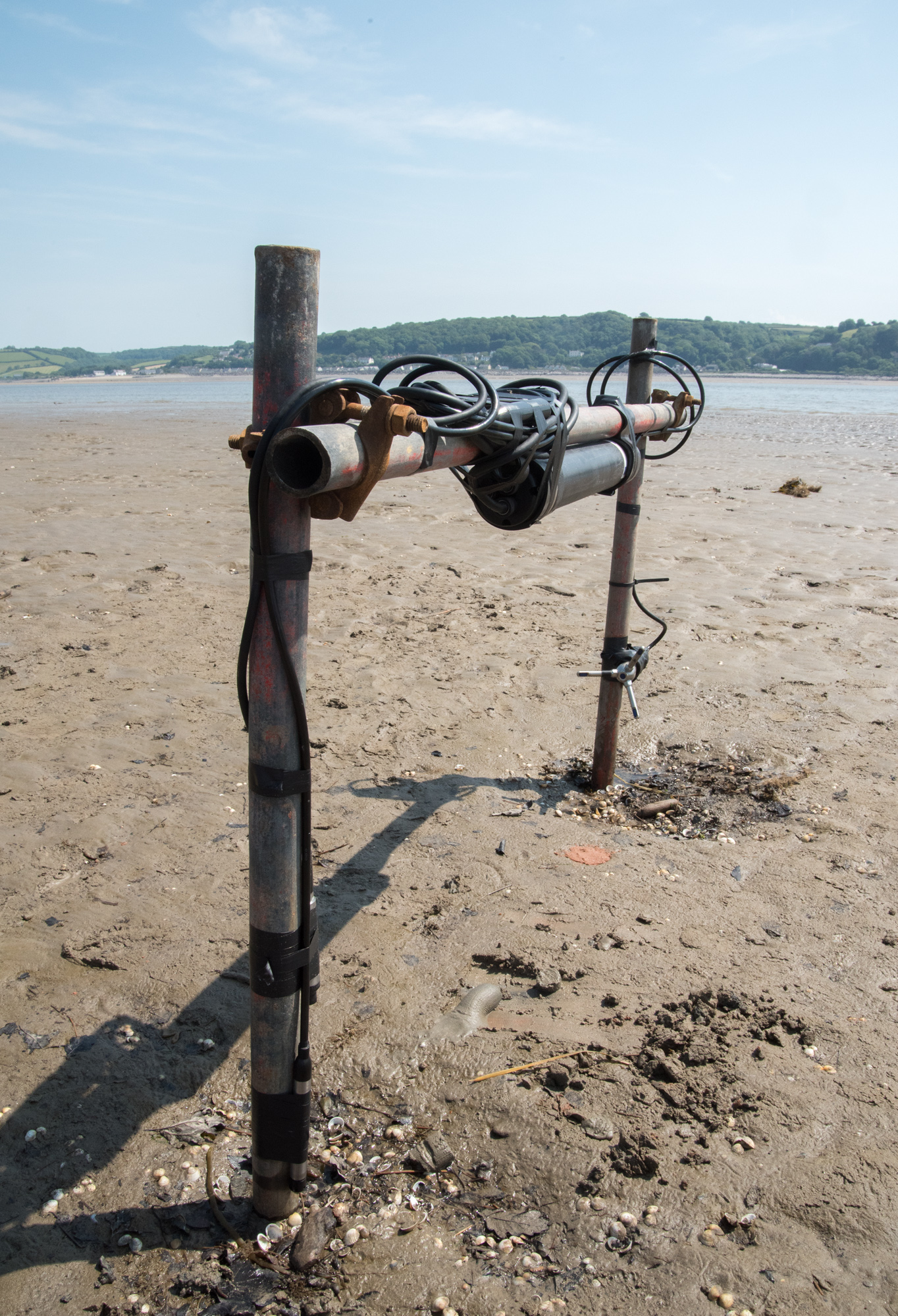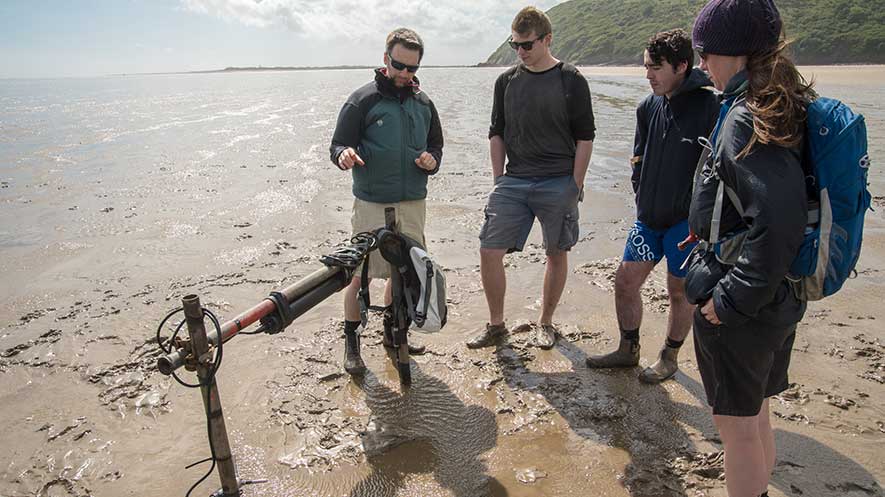Students from the School of Ocean Sciences at Bangor University, have a 30-year tradition of heading to the Laugharne Estuary in south Wales each summer to investigate the sediment dynamics of this energetic environment.
Survey data, collected by successive generations of students over this period, indicate that the estuary is infilling with fine marine sand at a rate of 1-2 cm per year. The sediment transport results primarily from strong asymmetric tidal currents causing the influx of sand from Carmarthan Bay on the dominant flood tide.
Additionally, locally-generated wind waves in the shallow estuary may contribute at different frequencies and complicate the overall picture. A newly introduced exercise utilizing Nortek’s Doppler instrumentation is helping the students to understand the processes behind this long-term trend in sedimentation.
“We are utilizing a Nortek Vector Doppler velocimeter, together with an externally mounted optical backscatter sensor (OBS) and a pressure transducer (PT) to illustrate the temporal patterns of sediment flux to the students,” says Dr. Martin Austin, lecturer in coastal sediment dynamics at Bangor University.
 Learning how to deploy instruments in the field
Learning how to deploy instruments in the field
Bangor University’s study group deploys the Vector at the start of the trip and set it to operate in burst-mode, recording 10 minutes of data at 4 Hz every 15 minutes. With its extended battery capacity and large on-board memory, the Vector can easily operate in this mode for the 10-day duration of the field trip.
To enable the students to compute the near-bed suspended sediment flux, Bangor University’s team position the sensor head of the Vector together with an optical backscatter sensor around 20 cm above the bed, while a pressure transducer flush positioned on the bed records even in the very shallowest water depths. All the data are logged internally by the Vector during its burst operations.
“Each day, a small group of students service the Vector, checking sensor alignments, clearing any weed deposits and downloading “their” data from the previous 24-hour period. At the same time, the students learn about the Doppler principles and gain valuable skills such as how to deploy instruments in the field,” Dr. Austin explains.
Back in the laboratory, students write Matlab code to analyze their data and compute the suspended sediment flux during the field course.
Increased scientific understanding of sediment transport
What is the benefit of combining hands-on field learning and academic studies in this way? Dr. Austin feels that by utilizing the latest Doppler instruments from Nortek during their field studies, Ocean Science students at Bangor are finishing their degrees with an increased scientific understanding of sediment transport processes.
“The students acquire important skills to undertake field deployments and conduct analysis of numerical datasets, thereby giving themselves a great advantage when moving into employment,” Dr. Austin concludes.





